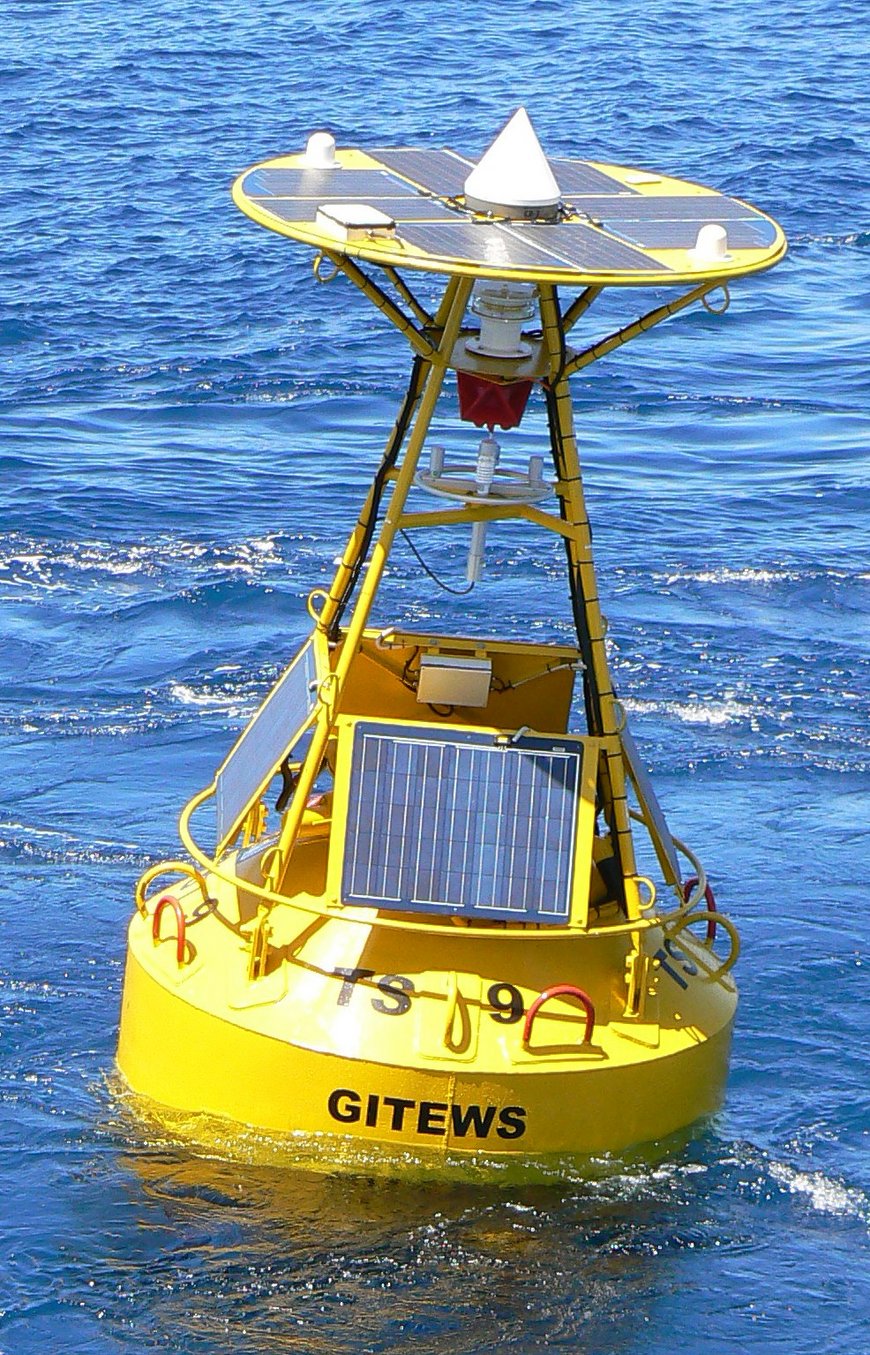GNSS-controlled buoys
Detection of tsunamis benefits from near real-time off-shore sea level measurements near source areas. Based on our experience in GNSS operated at buoys for radar altimetry calibration, this technology has been further developed and adapted for the Indonesian Tsunami Warning System GITEWS. Under this project, a number of buoys had been build, delivered and operated in Indonesia offshore Sumatra and Java.
The 7 m high buoys with a 2m diameter had been anchored 80 nm to 150 nm offshore the coasts of Sumatra and Java in water depth of up to 6000 m. Each buoy is equipped with a high-precision GPS (Septentrio AsteRX), a motion sensor to account for tilting and three dipping sensors for heave compensation. In addition a wide range of meteorological sensors are measuring supplementary scientific data. The solar powered buoy is designed to withstand the harsh offshore environment and can be moored in water depth down to 6000 m (depth rating of the anchor releaser). Inside the buoy an embedded PC104 works for system management and data storage. All attached sensors are operated and maintained using specially designed software modules. Data is stored on-board for delayed transmission.
Data transmission is the most critical part in off-shore installations. Therefore, three different types of communication equipment are used; INMARSAT’s BGAN network, Iridium satellite phones, and INMARSAT’s Asia-based PASTI phone service. This assembly assures 24 h access to the buoy as well as 24 h data transmission availability. The access is designed as a two-way communication. In case of a potential tsunami thread, the buoys can either be self-activating or may be triggered by the tsunami warning system in Jakarta.
Meteorological data (e. g. air temperature, air pressure, wind speed) are measured every minute. GPS data is sampled at 1 Hz, but down-sampled to 1/3 Hz. In case of a tsunami alert, the most recent hour of GPS data plus continuous 2’ updates are transmitted to the Tsunami warning center. The data processing is a kinematic solution using baseline approaches. The resulting time series of buoy coordinates are correction for dipping and tilting, and is smoothed to reduce for the sea state. This time series is than analyzed for tsunami signatures and used in the decision process in the Tsunami Warning Center.
Note: The GITEWS tsunami buoys are not longer in operation as part of the InaTEWS system.
As a further development using GNSS technologies on floating platforms a river buoy has been developed in cooperation with GFZ’s section 5.4/typo3/. The lightweight and easy to handle buoy is moored at Mekong River for stage monitoring. The GNSS data is transferred with local HF communication to a base station with a GNSS reference station. Both GNSS data sets are transferred by local communication and processed in a differential post-processing mode.



